Co-Operation - The Foundation of Winston-Salem
A SHORT HISTORY OF WINSTON-SALEM
Co-Operation - The Foundation of Winston-Salem
A SHORT HISTORY OF WINSTON-SALEM
On July 6, 1415, John Hus, of Bohemia, a Province of Austria, was burned at the stake as the first Protestant martyr preceding the Reformation. His martyrdom, together with the persecution of the small band which followed him, bore the germ of a movement which cluminated in migration.
This migration was ultimately to be responsible for the initial settlement of Winston-Salem, North Carolina.
Fleeing from Bohemia and Moravia to escape further religious persecution, John Hus' little band settled for a tinie in Saxony, Germany, under the protection and patronage of Count Zinzendorf. Again resistance to their desire for full religious liberty caused them to look toward the New World and in 1740 the "Moravians," as they are now called, settled in Pennsylvania.
SALEM - In January, 1753, a small party seeking an ideal location settled at the three forks of the Yadkin River, calling the region "Wachovia" to perpetuate the name of the beautiful estate of Count Zinzendorf left behind in Austria's Sunny Southland. Thirteen years later in 1766, eight men, two of them Danes, two Germans, one an Englishman and the other three Moravians, commenced the first building in the Town of Salem. Here the Moravians made their permanent abode and when the visitor enters Winston-Salem, a tinge of Old World history meets his eye, not so much in architecture but in the names that legend the past. Here we will find the MORAVIAN Church and College, the ZINZENDORF Hotel, The WACHOVIA Bank and Trust Company, with many others too numerous to mention.
What the Pilgrim Fathers were to New England, the Protestant Moravians were to this region. Each brought a strong desire for religious freedom. Each brought a desire for education. Both brought that courage and daring, that zeal and heroism which made possible the America of today.
The colony prospered from the beginning for the Moravians, like the Pilgrim Fathers, brought with them ideas and ideals founded on thrift, economy and community of spirit.
By co-operation the first church was built and co-operation proceeded to build the first school.
WINSTON - The prosperity of the colony began to attract others and about 1850 a small settlement was commenced on the fringe of Salem. This twin colony grew rapidly until in January 15, 1851, the Legislature passed an act naming "Winston" in honor of Major Joseph Winston of Revolutionary fame.
The two communities, Winston and Salem, grew together until in May, 1913, by a large majority in each municipality, it was voted to combine under the name of "Winston-Salem" - The Twin City.
THE TWIN CITY-Permeating the term "Twin City" is the text of the
Moravians "Unitas Fratrum" or "Unity of Brothers" which in modern phraseology
may be lettered co-operation and this co-operation has been largely responsible
for the growth and prosperity of the Industrial Metropolis of the Carolinas
- Winston-Salem.

Salem Square in 1800 |
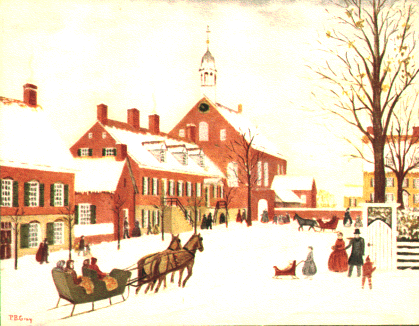
An “Old Salem” Christmas, 1840 |

An "Old Salem Christmas 1938 |
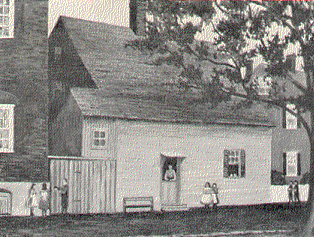
Tyco Nissen House in 1782 |

Salem Square About 1839 |
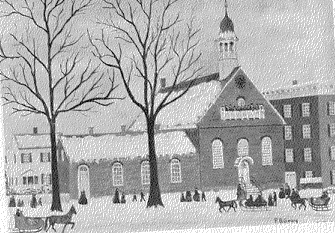
Home Morvavian Church About 1855 |

Salem Square Prior to 1921 |
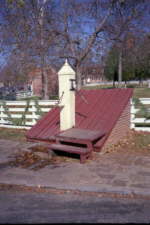
Water Pump at Salem Square |
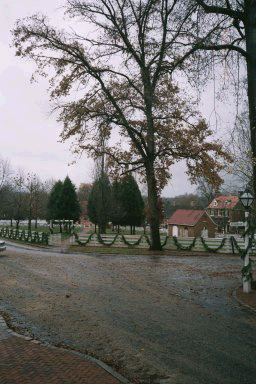
Salem Square 1999 |
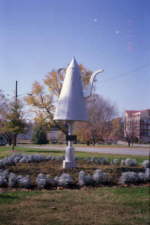
Coffee Pot Where Soldiers Hid |
 |
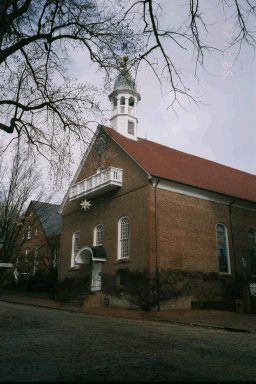 |
 |
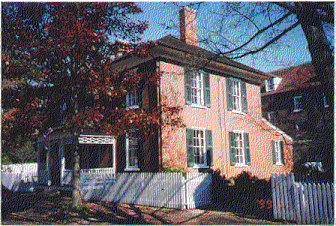 |
![]()
Please email questions and comments concerning this page to:

Return to Long Island Genealogy Home Page